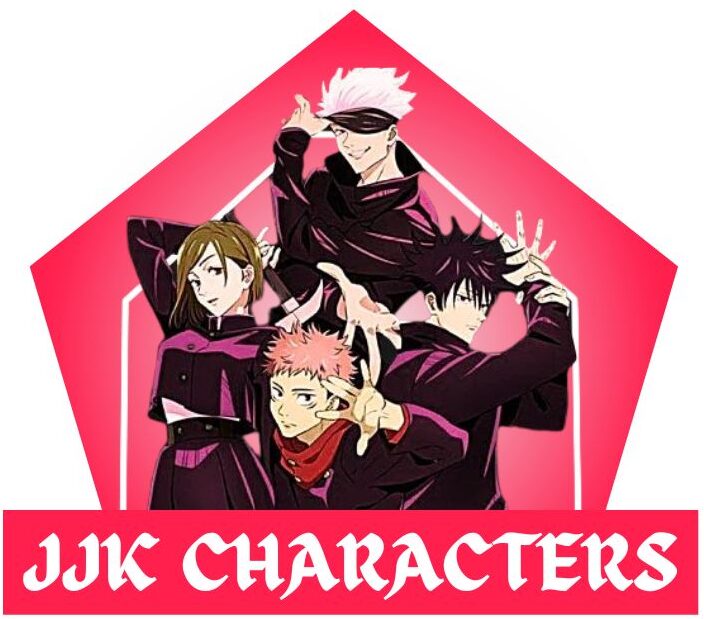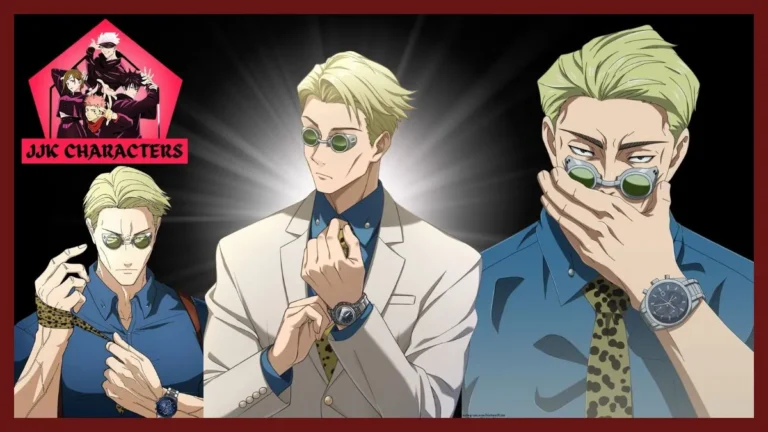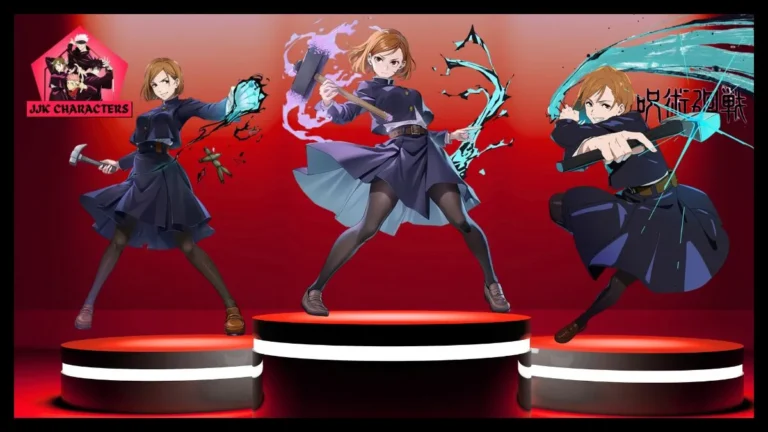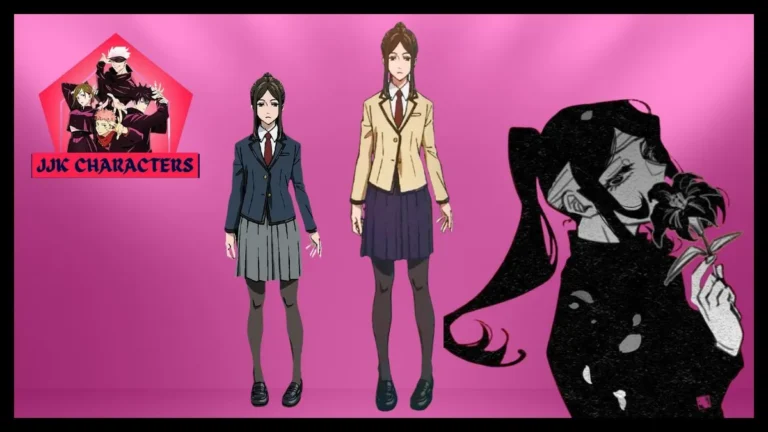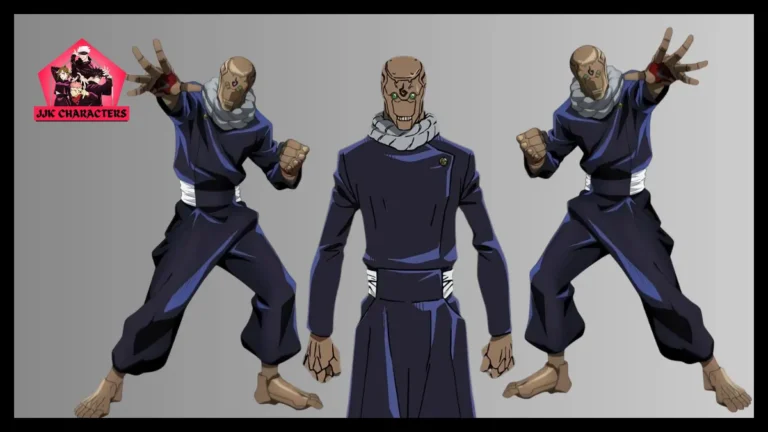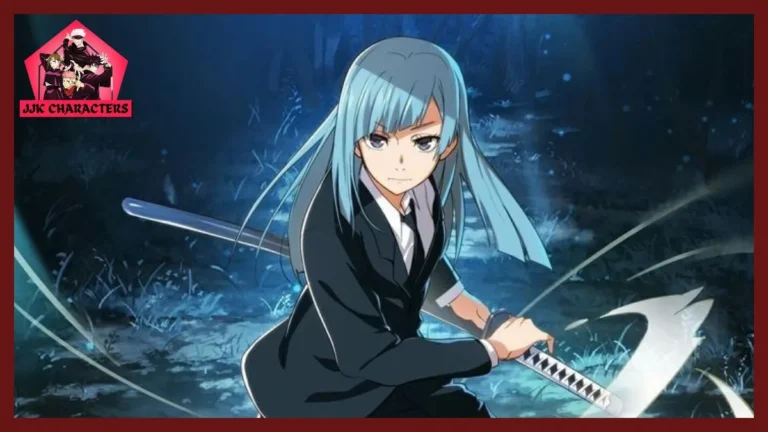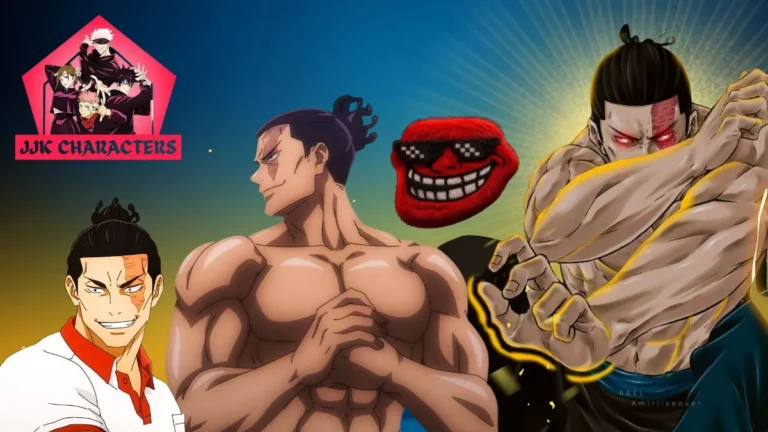Mahito: Full Biography & Role in JJK
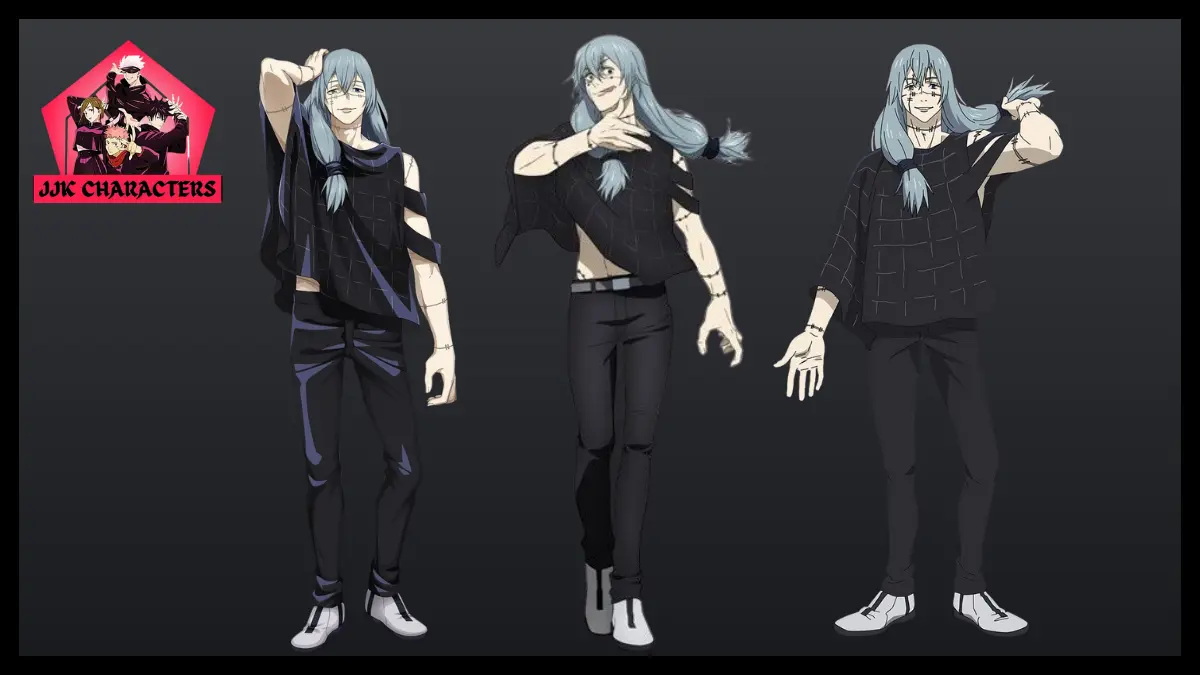
Mahito stands as one of the most philosophically complex and genuinely disturbing antagonists in Jujutsu Kaisen. Born from humanity’s collective hatred and fear of other humans, he’s a Special Grade Cursed Spirit who embodies the darkness people harbour towards one another.
Unlike many cursed spirits who operate on instinct or singular obsessions, Mahito JJK possesses a chilling intelligence and an insatiable curiosity about the nature of the soul itself.
His existence raises uncomfortable questions about what it means to be human a theme he explores with sadistic glee throughout the series.
What makes Mahito particularly terrifying isn’t just his grotesque abilities, but his childlike enthusiasm for cruelty.
He doesn’t kill out of necessity or rage; he experiments, he plays, and he learns. This combination of philosophical depth and gleeful malevolence cements him as a villain who’s both intellectually engaging and viscerally repulsive.
Key Facts Table About Mahito JJK:
| Attribute | Detail |
| Kanji | 真人 |
| Rōmaji | Mahito |
| Alias | Patchface |
| Species | Cursed Spirit |
| Gender | Male |
| Height | Over 180 cm (5’11″+) |
| Hair Color | Light Blue |
| Eye Color (Anime) | Heterochromia — Gray & Blue |
| Eye Color (Manga) | Gray |
| Grade | Special Grade |
| Affiliation | Mahito’s Group |
| Status | — |
| Manga Debut | Chapter 16 |
| Anime Debut | Episode 7 |
| Japanese Voice | Nobunaga Shimazaki |
| English Voice | Lucien Dodge |
Role in Jujutsu Kaisen
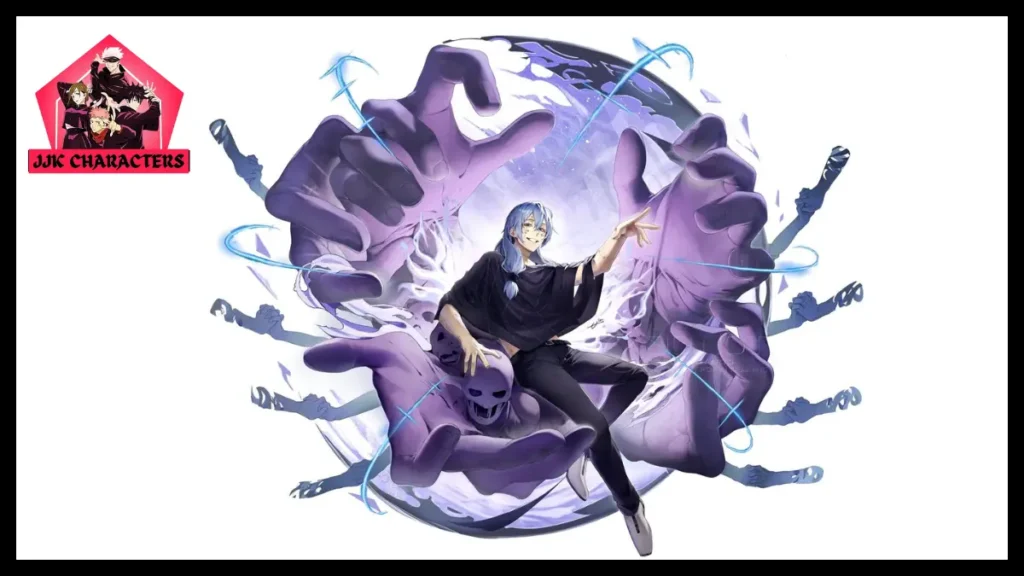
Mahito JJK Importance in the Story
Mahito serves as far more than a mere obstacle for the protagonists to overcome. He’s a thematic counterweight to Yuji Itadori’s ideology about the value of life and the importance of proper deaths.
Whilst Yuji fights to honour lives and ensure people die surrounded by others who care, Mahito JJK treats souls as playthings raw material for experimentation and amusement.
His presence forces the narrative to confront darker philosophical territory. Through his interactions with humans and sorcerers alike, the series explores the malleability of identity, the nature of the soul, and whether cursed spirits beings born from human negativity might be more human than the people who created them.
Mahito’s fascination with his own existence and constant evolution mirror humanity’s worst traits: curiosity without ethics, intelligence without empathy, and growth without moral restraint.
Major Arcs and Appearances
Mahito’s influence permeates several critical arcs. He first emerges during the Vs. Mahito Arc, where his manipulation of Junpei Yoshino demonstrates his psychological cunning. This arc establishes him not just as physically dangerous, but as someone who understands human vulnerability at a fundamental level.
However, it’s during the Shibuya Incident that Mahito JJK truly comes into his own. The arc showcases his evolution both as a cursed spirit and as a combatant, pushing him to achieve Black Flash and unlock new dimensions of his cursed technique.
His role in the massacre and chaos that unfolds in Shibuya cements his position as one of the series’ most consequential villains.
Appearance
Mahito’s design brilliantly reflects his cursed nature. At first glance, he looks almost human—a lean figure with greyish-blue skin and distinctive stitching patterns across his face and body, like a patchwork doll. These stitches aren’t just for show; they hint at his ability to reshape both flesh and souls.
His heterochromatic eyes (different colours) add an unsettling edge to his appearance. He usually wears casual, modern clothing typically a black shirt and trousers—which creates an eerie contrast. This everyday look reflects his twisted fascination with blending into human society whilst remaining fundamentally monstrous.
In combat, Mahito’s true nature emerges. His form becomes grotesque as he reshapes his limbs into weapons, enlarges his body, or twists into nightmarish shapes. This fluidity reveals a core truth: Mahito JJK has no fixed identity only endless potential for transformation.
Mahito JJK’s Personality
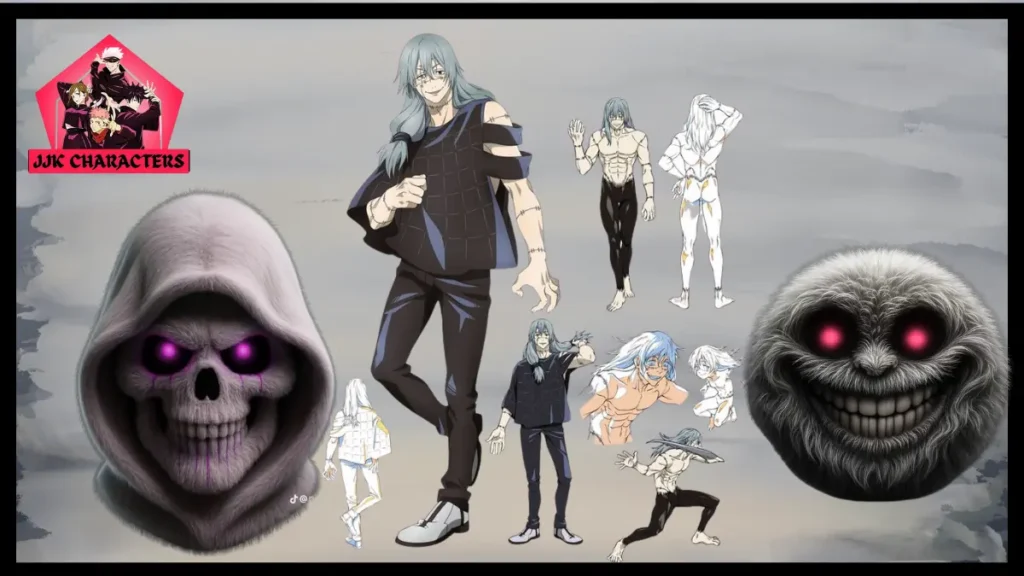
Mahito embodies a disturbing paradox: he’s childlike yet sadistic, curious yet cruel. As a relatively young cursed spirit, he explores the world with genuine fascination—especially souls and how they can be manipulated.
However, this curiosity takes horrifying forms. Mahito doesn’t empathise with human suffering; he finds it interesting. He’ll torture, transform, and kill with a smile, treating victims as experiments. There’s no traditional malice just complete moral absence.
Despite this cruelty, Mahito JJK possesses strange authenticity. He’s a curse born from human hatred and embraces it fully, never pretending otherwise. His alliance with Jogo and other cursed spirits suggests genuine camaraderie, though whether it’s true friendship remains unclear.
Humanity, Philosophy & Motivations
Mahito’s View on Souls and Humanity
Mahito’s philosophy centres on a radical belief: the soul is the true self, whilst the body is merely a vessel. His cursed technique, Idle Transfiguration, allows him to perceive and manipulate souls directly seeing a person’s essence beyond physical appearance or identity.
This unique perspective breeds contempt for humanity. Mahito believes humans are deluded, confusing their bodies and social roles with their actual selves.
He views his ability to reshape souls as enlightenment, revealing truth beneath comfortable illusions. Of course, this “truth” manifests as body horror, but Mahito JJK considers that humanity’s problem, not his.
Age & Concept of “Humanity”
Despite being a relatively young cursed spirit likely born within recent years Mahito JJK displays sophisticated understanding of human psychology and philosophy. This raises questions: does he inherit knowledge from the collective human fear that created him, or is his intelligence simply extraordinary?
His youth fuels his rapid evolution. Unlike ancient curses, Mahito JJK actively learns from combat and refines his techniques at an alarming rate. This growth makes him increasingly dangerous, combining youthful adaptability with Special Grade lethality.
Philosophical Quotes and Symbolism
Mahito’s dialogue reflects his warped philosophical framework. He famously questions morality’s relativity, arguing that “war” and “murder” are semantically identical both involve killing, yet society treats them differently. This observation positions him as a mirror to humanity’s contradictions.
His name carries deep symbolism. In Japanese, Mahito (真人) means “true person” or “perfected human,” borrowed from Daoist philosophy where a Zhenren achieves enlightenment through Wuwei (effortless action).
The irony is deliberate: Mahito, a curse born from human hatred, embodies twisted perfection living without moral constraints or empathy.
This philosophical depth makes him more than a monster. He’s an ideological antagonist forcing audiences to confront uncomfortable truths about human nature.
Mahito JJK’s Relationships and Interactions
With Yuji Itadori
Mahito and Yuji Itadori dynamic forms one of Jujutsu Kaisen’s core conflicts. They’re ideological opposites: whilst Mahito JJK treats souls as experimental material, Yuji fights to preserve every life’s dignity.
Mahito JJK delights in tormenting Yuji psychologically. Junpei Yoshino’s transformation and death deliberately attacks Yuji’s values, proving Mahito can destroy what Yuji protects. However, this cruelty backfires Yuji’s rage after Kento Nanami’s death pushes him to genuinely threatening levels.
Ironically, Mahito also fears Yuji. Because Yuji houses Sukuna, Mahito cannot safely use Idle Transfiguration on him touching Yuji’s soul risks contact with the King of Curses, who reacts violently. This creates a tactical weakness Mahito JJK must carefully navigate.
With Kento Nanami
Nanami represents everything Mahito finds both intriguing and dismissible about jujutsu sorcerers: discipline, professionalism, and a clear moral code. Their battles showcase Mahito’s sadistic enjoyment of breaking down composed opponents.
Nanami’s analytical approach and ratio technique pose genuine threats, forcing Mahito to adapt and evolve his combat strategy.
The ultimate confrontation between them during the Shibuya Incident reveals Mahito at his most cruel. He doesn’t simply kill Nanami he dismantles him emotionally and physically, delivering the final blow when Nanami is already exhausted and vulnerable.
This murder, carried out in front of Yuji, demonstrates Mahito’s understanding of psychological warfare and his willingness to exploit emotional bonds.
With Junpei Yoshino
Mahito’s manipulation of Junpei showcases his most insidious nature. He befriends the isolated, bullied teenager with false compassion, exploiting Junpei’s vulnerability and anger.
The relationship is entirely one-sided. Whilst Junpei genuinely trusts Mahito as his first real friend, Mahito JJK sees only an experimental subject and a tool to hurt Yuji.
The brutal transformation of Junpei’s mother (orchestrated by planting Sukuna’s finger) and subsequently Junpei himself reveals Mahito’s complete lack of empathy. He feels nothing—it was all merely research and entertainment.
With Jogo, Hanami, and Other Cursed Spirits
Within Mahito’s Group, he displays genuine camaraderie with fellow cursed spirits like Jogo, Hanami, and Dagon. He engages them in philosophical discussions about their nature, acting as a pragmatic voice.
Whilst Jogo tends towards hot-headed impatience, Mahito JJK remains calmer and more strategic, though equally committed to eradicating humanity.
His interactions suggest something resembling friendship. When allies fall in battle, Mahito shows brief mourning before returning to his typical demeanour. Whether this reflects genuine emotion or simply intellectual appreciation for lost resources remains ambiguous.
With Allies (Kenjaku and Others)
Mahito’s alliance with Pseudo-Geto (Kenjaku) proves most significant—and ultimately fatal. Kenjaku recognises Idle Transfiguration’s strategic potential, guiding Mahito’s Group towards larger operations like the Shibuya Incident.
However, Kenjaku views Mahito as disposable. When Mahito’s usefulness ends, Kenjaku absorbs him using Cursed Spirit Manipulation, ending his autonomy to gain access to his technique. This betrayal reveals their alliance’s true nature: Mahito was never a partner, merely a tool.
Mahito JJK also interacts with human allies like Haruta, though he treats them with contempt useful idiots rather than genuine partners.
Manipulation and Influence
Mahito demonstrates sophisticated manipulative capabilities beyond individual relationships. His corruption of Junpei involves gradual exposure to cursed spirits, philosophical grooming, and strategically placing Sukuna’s finger to orchestrate Junpei’s mother’s death all whilst maintaining a friendship facade.
He understands human psychology deeply, exploiting insecurities, traumas, and desires with surgical precision. This makes Mahito dangerous not just in combat but as a corrosive influence, turning potential allies into enemies and stable situations into chaos.
Mahito JJK’s Abilities and Powers
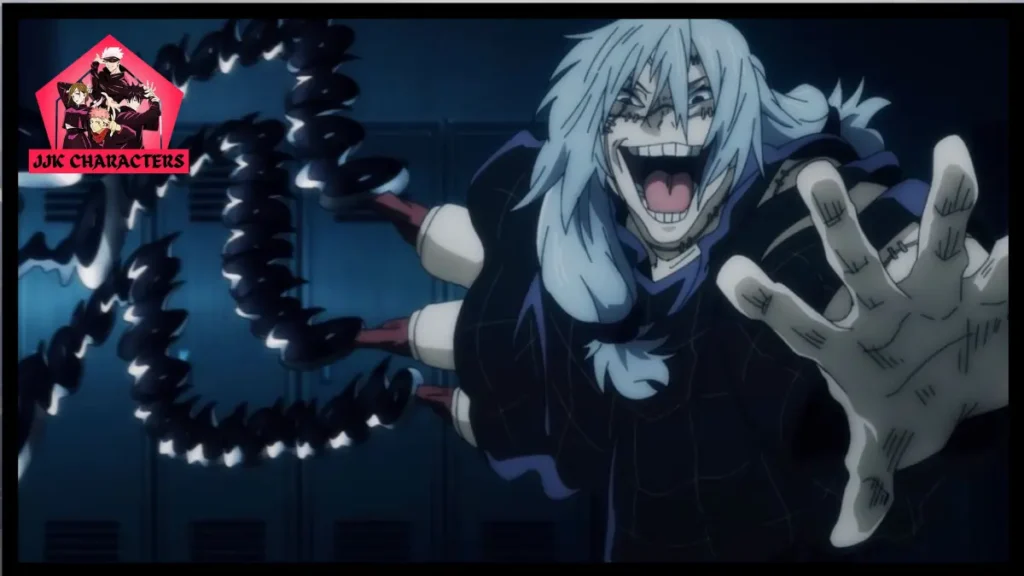
Overview
As a Special Grade Cursed Spirit, Mahito ranks amongst Jujutsu Kaisen’s most dangerous entities. His true threat lies in his cursed technique’s fundamental nature: the ability to perceive and manipulate souls directly.
This grants offensive capabilities that bypass conventional defences, making him nearly impossible to kill through normal means. His power doesn’t stem solely from raw cursed energy or physical might though he possesses both but from this unique soul-targeting ability that ignores traditional protection methods.
Physical Prowess
Mahito’s physical capabilities far exceed human limits, matching trained jujutsu sorcerers. His raw strength shatters concrete, destroys Ultimate Mechamaru units, and allows close combat with Yuji Itadori without being overwhelmed.
His speed and reflexes enable evasion of coordinated assaults from Nanami and Yuji simultaneously. During battles with Aoi Todo, Mahito JJK tracks and responds to Boogie Woogie’s constant position swaps.
His durability is equally impressive surviving multiple Black Flash strikes and devastating blows that would incapacitate lesser curses, all whilst continuing to fight effectively.
Intelligence
Mahito’s extraordinary intelligence stands as his most dangerous asset. He strategises, sets traps, and adapts tactics based on opponent analysis. His ability to deduce Boogie Woogie’s mechanics mid-battle and develop counters showcases rapid analytical thinking under pressure.
Working alongside Kenjaku, Mahito JJK provides crucial strategic insight to operations. He knows precisely when to retreat, when to press advantages, and how to maximise the psychological impact of his actions demonstrating sophisticated understanding beyond what’s expected from a curse supposedly driven by instinct.
Cursed Energy
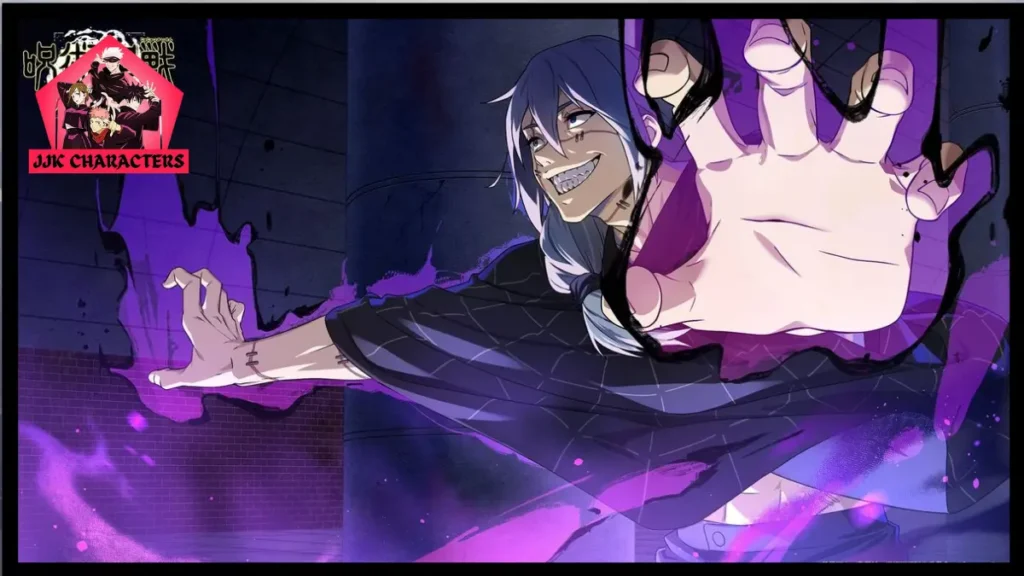
Mahito JJK possesses vast cursed energy reserves befitting his Special Grade status. More impressively, he demonstrates exceptional manipulation and refinement of that energy, continuously improving throughout the series.
Experiencing Black Flash where cursed energy impacts within 0.000001 seconds of physical contact—profoundly deepens his understanding of cursed energy manipulation. This elevates his already formidable abilities to new heights.
His energy reserves enable sustained combat against multiple opponents and Domain Expansion activation whilst maintaining other techniques simultaneously, showcasing remarkable stamina and control.
Cursed Technique
Idle Transfiguration (無為転変, Mui Tenpen) stands as Mahito’s innate cursed technique and core identity. It grants him the ability to perceive and alter souls at will when he touches a target, their soul reshapes and the body automatically follows, creating grotesque transformations.
This technique bypasses physical durability entirely. Armour, reinforced cursed energy, or natural resilience offer no protection. The only defence is protecting one’s own soul, achievable through exceptional circumstances like Yuji housing Sukuna.
Idle Transfiguration’s versatility extends to self-application—Mahito reshapes his own body for combat advantages, healing, or evasion, making him extraordinarily difficult to permanently damage.
Known Techniques
Idle Transfiguration (Mui Tenpen)
The foundation of Mahito’s arsenal, Idle Transfiguration transforms humans into monstrous forms called transfigured humans who lose their sense of self and become mindless weapons.
These victims cannot be reversed to their original state the transformation is permanent and inevitably fatal, even if the physical form survives temporarily.
Mahito JJK uses this technique for both combat and experimentation, creating various forms of transfigured humans with different capabilities. He treats living people as raw material for his research into souls and curses, showcasing his complete disregard for human life.
Polymorphic Soul Isomer (Kikon Iseitai)
This advanced application creates transfigured human clones specifically designed for detonation. Mahito shapes souls into unstable configurations that explode when triggered, turning his victims into living bombs.
This technique demonstrates both his creativity and complete disregard for the humanity of his test subjects.
Soul Multiplicity (Tajukon)
Soul Multiplicity allows Mahito to combine multiple transfigured humans into a single, more powerful entity. By merging souls together, he creates grotesque amalgamations with enhanced strength, durability, and cursed energy. These composite beings serve as powerful shock troops or diversions during larger operations.
This technique showcases Mahito’s understanding of souls as modular components—things to be mixed, matched, and reconfigured according to tactical needs.
Body Repel (Battai)
A defensive technique where Mahito rapidly reshapes his body to deflect or redirect attacks. By altering his form at the moment of impact, he can negate strikes that would otherwise cause significant damage. Body Repel contributes significantly to his survivability in combat against powerful opponents.
Instant Spirit Body of Distorted Killing (Hensetsu Soku Reitai)
This combat transformation dramatically alters Mahito’s physical form, enlarging his body mass, extending his limbs into blade-like weapons, and generally optimising his shape for maximum lethality.
In this state, his physical parameters increase substantially, allowing him to overwhelm opponents through sheer violence.
The transformation isn’t permanent Mahito JJK can shift in and out of it as tactical situations demand, demonstrating the fluid nature of his self-perception and form.
Curtain (Tobari)
Like many high-level curses and sorcerers, Mahito can deploy Curtains barriers that separate spaces from the outside world. These serve various purposes: concealing operations from civilians, trapping opponents, or creating favorable environmental conditions.
His use of Curtains during coordinated attacks shows tactical sophistication beyond mere combat prowess.
Self-Embodiment of Perfection (Jihei Endonka)
Mahito’s Domain Expansion: Self-Embodiment of Perfection creates a space where his will becomes absolute. Within this domain, he can touch and transfigure souls without physical contact—the guaranteed hit effect of Domain Expansion ensures his technique connects with anyone trapped inside.
What makes this particularly dangerous is that Mahito has demonstrated the ability to activate his domain for extremely brief periods as short as 0.2 seconds long enough to tag opponents but too brief for most to deploy their own domains in response.
This technique refinement shows his rapid growth and tactical innovation under pressure.
Black Flash (Kokusen)
Though not exclusive to Mahito, his achievement of Black Flash during the Shibuya Incident marks a significant evolution. Black Flash occurs when cursed energy impacts within a microsecond of physical contact, creating a spatial distortion that amplifies the attack’s power to 2.5 times normal output whilst producing black sparks.
Most sorcerers and curses never achieve this phenomenon. That Mahito not only accomplishes it but does so multiple times in succession demonstrates his extraordinary combat instincts and cursed energy control.
The experience permanently elevates his understanding of cursed energy, pushing him into what might be considered a higher tier of power.
Jujutsu
Mechanics of Mahito’s Cursed Technique
Idle Transfiguration operates on a profound principle: the soul dictates the body’s form, and Mahito can perceive and alter souls directly, granting reality-warping power over biological forms.
Crucially, Mahito can only create clones and duplicates of himself—he cannot perfectly replicate other individuals. His transfigured humans lose their original identity entirely, becoming something monstrous. This limitation suggests boundaries, though it hardly diminishes effectiveness.
His self-transfiguration operates differently. Reshaping his own soul allows healing (by returning to its “correct” shape), combat adaptation, and evasion tactics that make him extraordinarily difficult to pin down or permanently injure.
Interaction with Domain Expansion
Within his Domain Expansion, Self-Embodiment of Perfection, Mahito’s technique reaches its ultimate expression. The guaranteed hit ensures Idle Transfiguration connects with all souls within the barrier, bypassing the usual requirement for physical touch.
His mastery of 0.2-second Domain activations represents advanced technique control. Most sorcerers require several seconds to deploy Domain Expansion; Mahito’s instantaneous deployment and collapse demonstrates both fine control and tactical genius, using the domain as a precision strike tool rather than an extended battlefield.
Reverse Cursed Energy Aspects
The relationship between Mahito’s healing and Reverse Cursed Energy remains somewhat ambiguous in canon. Traditional Reverse Cursed Energy converts negative cursed energy into positive energy for healing.
Mahito JJK, however, appears to heal by reshaping his soul back to its “correct” form, which then dictates his body’s restoration.
Whether this constitutes true Reverse Cursed Energy or simply an application of Idle Transfiguration for self-repair remains debated amongst fans. What’s clear is that Mahito can recover from injuries that would permanently disable or kill other curses, giving him exceptional sustainability in prolonged combat.
Combat Skills
Speed and Reflexes
Mahito’s speed allows him to keep pace with some of the fastest characters in the series. He evades attacks from Yuji (whose physical abilities are superhuman even without cursed energy enhancement), matches Nanami’s calculated strikes, and later tracks the position-swapping chaos of Boogie Woogie employed by Aoi Todo.
His reflexes enable split-second transformations, dodging, and counterattacks that turn potential fatal blows into glancing strikes or complete misses.
Endurance and Durability
Beyond his ability to reshape injuries away, Mahito possesses fundamental durability that allows him to withstand tremendous punishment. He’s taken multiple Black Flash strikes attacks that exponentially amplify damage and continued fighting.
His battles frequently involve sustained damage that would kill ordinary curses, yet he persists through combination of toughness and rapid regeneration.
Malleable Physiology / Regeneration
This aspect deserves special emphasis as perhaps Mahito’s greatest defensive asset. His malleable physiology allows him to:
- Reshape his body to avoid vital damage
- Extend or retract limbs to control combat range
- Transform injuries into non-critical body areas
- Heal by restoring his soul’s “correct” shape
- Adapt his form mid-combat for tactical advantage
Essentially, Mahito has no fixed weak points. Strike his head? He can shift vitals elsewhere. Sever a limb? He’ll reshape it or regenerate it. This makes him extraordinarily difficult to defeat through conventional combat, requiring either overwhelming power, soul-targeting techniques, or as ultimately happens absorption by a technique like Cursed Spirit Manipulation.
Tactical and Strategic Aptitude
Mahito’s intelligence extends beyond analysis into genuine strategic thinking. He:
- Deduced Boogie Woogie’s mechanics through observation
- Set traps and ambushes for experienced sorcerers
- Manipulated Junpei over an extended period
- Contributed strategic planning to large-scale operations
- Adapted combat tactics in real-time based on opponent abilities
His ability to remain calm under pressure, assess situations accurately, and implement effective responses makes him dangerous even when outmatched in raw power.
Battles & Events
Fight with Junpei Yoshino (Incident)
Mahito’s confrontation involving Junpei isn’t a traditional fight it’s orchestrated psychological warfare. When Yuji attempts to save Junpei, Mahito JJK reveals his true nature by transfiguring the boy directly in front of him, turning the moment into a calculated emotional assault.
This incident establishes Mahito’s cruelty and his profound understanding of how to wound opponents beyond physical combat. By destroying what Yuji desperately tries to protect, Mahito demonstrates that his true weapon isn’t just his cursed technique, but his ability to inflict deep psychological trauma.
Battle with Kento Nanami and Yuji Itadori
The confrontation between Mahito and the team of Nanami and Yuji showcases his combat evolution. Initially, Nanami’s analytical approach and ratio technique combined with Yuji’s soul-protected strikes force Mahito onto the defensive.
This battle reveals Mahito’s limitations against opponents who negate his technique’s instakill properties and match his physical abilities, he struggles.
However, it also demonstrates his rapid growth; he’s forced to adapt, developing new applications of Idle Transfiguration and learning to manage multiple skilled opponents. By the encounter’s end, he’s noticeably more dangerous.
Shibuya Incident (Major Arc Role)
The Shibuya Incident Arc represents Mahito’s apex. He plays a central role in the chaos that engulfs Shibuya, participating in the plan to seal Satoru Gojo and unleashing tremendous destruction on sorcerers and civilians alike.
During this arc, Mahito achieves Black Flash multiple times, unlocking new levels of power. He murders Nanami in a moment of brutal efficiency, then engages in a climactic battle against Yuji and Aoi Todo that pushes all combatants to their limits.
The introduction of Todo and his Boogie Woogie technique creates new tactical challenges. The constant position-swapping disrupts Mahito’s ability to track opponents and land decisive strikes.
Despite this, he continues evolving mid-battle, eventually activating his Domain Expansion in rapid bursts to tag opponents without giving them time to respond.
Final Confrontation and Aftermath
Mahito’s final moments as an independent entity come when Yuji and Aoi Todo corner him. Exhausted, damaged beyond regeneration, and genuinely frightened, he attempts to flee.
Kenjaku intervenes not to save his ally, but to claim him. Using Cursed Spirit Manipulation (the technique from Suguru Geto’s body that Kenjaku inhabits), he absorbs Mahito JJK, ending the cursed spirit’s autonomy and gaining Idle Transfiguration for his own purposes.
Whether this constitutes death or assimilation remains ambiguous. Mahito’s consciousness ends, yet his technique lives on, weaponised by Kenjaku for larger schemes.
Victims
Human Victims
Mahito’s human victims number in the dozens at minimum, possibly hundreds when accounting for all the transfigured humans he created for experiments and combat deployment. Notable individual victims include:
- Junpei Yoshino — Manipulated, befriended, then grotesquely transformed in front of Yuji
- Junpei’s mother — Killed by a curse triggered by Sukuna’s finger that Mahito strategically placed
- Numerous unnamed civilians transformed into monstrous forms and deployed as weapons
The transfigured humans represent perhaps Mahito’s most horrifying legacy—people stripped of their humanity, consciousness destroyed, bodies twisted into nightmare shapes, used as disposable soldiers or experimental subjects.
Sorcerer Victims
Kento Nanami stands as Mahito’s most significant sorcerer victim. Already exhausted and injured from earlier battles during the Shibuya Incident, Nanami faces Mahito one final time.
Mahito JJK delivers the killing blow without hesitation, extinguishing one of the series’ most beloved characters and devastating Yuji in the process.
Various other sorcerers likely fell to Mahito during the chaos of Shibuya, though Nanami remains the most prominent and narratively significant.
Fan Reception & Cultural Impact
Popularity and Audience Reactions
Mahito’s reception amongst the Jujutsu Kaisen fanbase is fascinatingly polarised. He’s simultaneously one of the most hated characters for his cruelty, particularly toward Junpei and Nanami and one of the most appreciated from a writing perspective.
Fans recognise him as a superbly crafted villain whose philosophical depth and genuine threat level elevate the narrative.
In official popularity polls, Mahito ranks surprisingly high considering his antagonist role, demonstrating that audiences can appreciate a well-written villain even whilst despising their actions.
His height (listed as >180 cm in official materials) and distinctive patchwork appearance make him visually memorable, contributing to his recognition.
Memes, Cosplay & Online Discussions
Mahito’s alias “Patchface” (referencing his stitched appearance) has gained traction in fan communities. His philosophical quotes and disturbing charisma generate substantial online discussion, particularly regarding the moral questions he raises about cursed spirits, humanity, and the nature of evil.
Cosplayers have embraced Mahito’s design despite—or perhaps because of—its difficulty. The patchwork stitching, heterochromia (as depicted in the anime, though manga illustrations show gray eyes), and his long grayish-blue hair paired with his black shawl, matching pants, and white shoes create a distinctive silhouette that stands out at conventions.
Critical Reception
Critics and analysts frequently compare Mahito to other well-crafted antagonists in anime, with particular parallels drawn to characters like Shigaraki from My Hero Academia or Dabi from the same series—villains who challenge protagonists ideologically whilst posing genuine physical threats.
Gege Akutami (the series creator) has received praise for Mahito’s characterisation, with the curse serving as an effective vehicle for exploring darker philosophical territory.
The voice performances by Nobunaga Shimazaki (Japanese) and Lucien Dodge (English) have also garnered acclaim for capturing Mahito’s unsettling blend of childlike enthusiasm and sadistic cruelty.
The Curtain Falls / Later Fate
Status After Shibuya Incident
Following his absorption by Kenjaku via Cursed Spirit Manipulation, Mahito ceases to exist as an independent entity. Kenjaku gains access to Idle Transfiguration and incorporates it into his arsenal, using it for large-scale manipulation of humans in pursuit of his mysterious endgame.
From a technical standpoint, Mahito’s cursed energy and technique persist just under new management. Whether any fragment of his consciousness remains within Kenjaku or if he’s been completely annihilated remains unclear in canon.
Theories & Lingering Presence
Fan theories occasionally speculate about potential Mahito resurrection or reemergence. Given that curses are born from collective human emotions, some wonder whether humanity’s fear and hatred could eventually generate a new curse similar to Mahito. However, canon provides no indication this will occur.
His lingering presence manifests more thematically Mahito’s actions, particularly Nanami’s death and the creation of countless transfigured humans, continue affecting characters and plot progression long after his assimilation. He remains one of the most impactful antagonists despite his relatively limited screen time.
Trivia
- Mahito (真人) references the Daoist concept of Zhenren, meaning “perfected person”—ironic for a curse embodying humanity’s worst aspects
- He’s one of the few curses born specifically from human hatred toward other humans, contrasting with natural disaster curses like Jogo (volcanoes) or Hanami (forests)
- Official materials list his kanji as 真人 and note his height as >180 cm
- In the anime, Mahito displays heterochromia, whilst manga depictions typically show gray eyes
- He appears on several volume covers, reflecting his narrative importance despite being a supporting antagonist
- Mahito achieved Black Flash during combat—a feat many experienced sorcerers never accomplish
- His friendship with other cursed spirits (particularly Jogo) adds unexpected emotional dimension to his character
- The design of his patchwork face and stitching patterns influenced numerous fan theories about his origins before canon clarification
Quotes
To Junpei, regarding human nature:
“I’m talking about the relationship between ‘war’ and ‘murder.’ I hate how the words blur depending on the situation.” (Paraphrased from early Vs. Mahito Arc chapters)
To Yuji, about souls:
“I’m a curse born from the hatred humans have for each other. In a way, I’m much more human than you, Yuji Itadori.”
Philosophical musing:
“The shape of the soul comes before that of the body. I simply aligned his body with the shape of his soul.” (Referencing his technique after transforming a victim)
During battle:
“I understand now! This is what it feels like! This is Black Flash!” (Shibuya Incident)
(Note: Exact quotes may vary slightly between translation versions; refer to official manga chapters and anime episodes for precise wording)
References
- Jujutsu Kaisen Manga: Chapter 16 (First Appearance)
- Jujutsu Kaisen Anime: Season 1, Episode 7 (First Appearance)
- Jujutsu Kaisen Official Fanbook — Character profiles and ability details
- Shibuya Incident Arc — Chapters and Season 2 episodes (exact numbering varies by region)
- Official character data: Height >180 cm, Voice Actors Nobunaga Shimazaki (JP) / Lucien Dodge (EN)
Navigation
Yuji Itadori — In‑Universe Biography (Jujutsu Kaisen)
Kento Nanami: Complete Biography
Frequently Asked Question
Who kills Mahito?
Kenjaku absorbs Mahito using Cursed Spirit Manipulation after Yuji and Todo defeat him during the Shibuya Incident, ending his autonomy rather than traditionally “killing” him.
How old is Mahito?
Mahito is a relatively young cursed spirit, likely existing for only a few years before his first appearance, though he doesn’t have a traditional human age.
Does Mahito die?
Mahito loses his individual consciousness when Kenjaku absorbs him, ending his existence as an independent entity, though his Idle Transfiguration technique persists within Kenjaku.
Why did Mahito attack Geto?
Mahito never attacked Geto—this is a common misconception. Kenjaku (inhabiting Geto’s body) actually absorbed Mahito, not the other way around.
What episode does Mahito die?
Mahito’s absorption occurs in the final episodes of Season 2’s Shibuya Incident Arc (episode numbers vary by regional release).
Why did Geto kill Mahito?
Kenjaku (not the real Geto) absorbed Mahito to gain Idle Transfiguration for his master plan and to consolidate power, viewing Mahito as a useful tool rather than an ally.
Conclusion
Mahito’s impact on Jujutsu Kaisen extends far beyond his narrative presence. He fundamentally breaks Yuji Itadori, forcing the protagonist to confront the genuine cost of being a jujutsu sorcerer. The deaths of Junpei and Nanami both attributable to Mahito—permanently shape Yuji’s worldview.
Thematically, Mahito JJK embodies the series’ exploration of humanity and monstrosity. A curse born from human hatred, yet displaying curiosity and intelligence, he blurs moral lines and challenges simplistic narratives.
His Daoist-inspired name (真人/Zhenren) positions him as a dark mirror to spiritual ideals—a “perfected person” acting without moral constraints.
Idle Transfiguration remains one of the series’ most dangerous abilities, now weaponised by Kenjaku for even larger schemes.
Ultimately, Mahito succeeds as a villain not just through power, but through philosophical depth. He’s the patchwork curse who asked uncomfortable questions and left permanent scars on Jujutsu Kaisen’s world—a testament to Gege Akutami’s masterful villain crafting.
